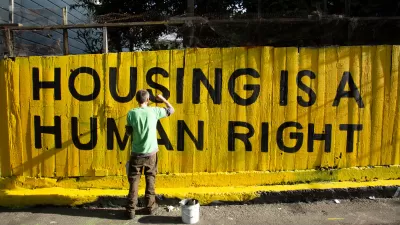Health care advice can often be given through video or teleconferencing, which saves a great deal of time and money, but most patients still aren't eager to do it.

More and more employers, hoping to offer attractive benefits and save money, now have telemedicine plans. These allow patients to consult a doctor over the phone or through a video conference without the expense or trouble of meeting the doctor in person. For common issues like strep throat, a patient might get a diagnosis, prescription, and start treatment much more quickly using telemedicine than going through the traditional face-to-face interaction. So why aren't teledocs more popular?
According to a Chicago Tribune article by Lisa Schencker, it's not because employers aren't interested. They can see the potential, "If it catches on broadly with consumers, telemedicine could change the face of health care, altering the relationship between doctors and patients seeking relief from common maladies." Perhaps, more importantly, they can see the potential savings. A healthier workforce is more productive and if employees use telemedicine, there are potential savings over in-person visits.
Schencker points out some of the reasons patients are being slow to adopt telemedice, "a lack of awareness, though, may not be the only obstacle for companies to overcome. Employees may wonder whether a doctor can accurately diagnose them without seeing them in person."
In the same way that telecommuting didn't live up to the hype, this seems to be another example of experts underestimating the importance of where we live and the persistence of our need for in-person services in medicine and all fields of human endeavor. Thomas Friedman's Flat World seems to be getting increasingly spikey.
FULL STORY: More employers are offering telemedicine, but why aren't workers using it?

Study: Maui’s Plan to Convert Vacation Rentals to Long-Term Housing Could Cause Nearly $1 Billion Economic Loss
The plan would reduce visitor accommodation by 25,% resulting in 1,900 jobs lost.

North Texas Transit Leaders Tout Benefits of TOD for Growing Region
At a summit focused on transit-oriented development, policymakers discussed how North Texas’ expanded light rail system can serve as a tool for economic growth.

Using Old Oil and Gas Wells for Green Energy Storage
Penn State researchers have found that repurposing abandoned oil and gas wells for geothermal-assisted compressed-air energy storage can boost efficiency, reduce environmental risks, and support clean energy and job transitions.

Santa Barbara Could Build Housing on County Land
County supervisors moved forward a proposal to build workforce housing on two county-owned parcels.

San Mateo Formally Opposes Freeway Project
The city council will send a letter to Caltrans urging the agency to reconsider a plan to expand the 101 through the city of San Mateo.

A Bronx Community Fights to Have its Voice Heard
After organizing and giving input for decades, the community around the Kingsbridge Armory might actually see it redeveloped — and they want to continue to have a say in how it goes.
Urban Design for Planners 1: Software Tools
This six-course series explores essential urban design concepts using open source software and equips planners with the tools they need to participate fully in the urban design process.
Planning for Universal Design
Learn the tools for implementing Universal Design in planning regulations.
Ascent Environmental
Borough of Carlisle
Institute for Housing and Urban Development Studies (IHS)
City of Grandview
Harvard GSD Executive Education
Toledo-Lucas County Plan Commissions
Salt Lake City
NYU Wagner Graduate School of Public Service





























